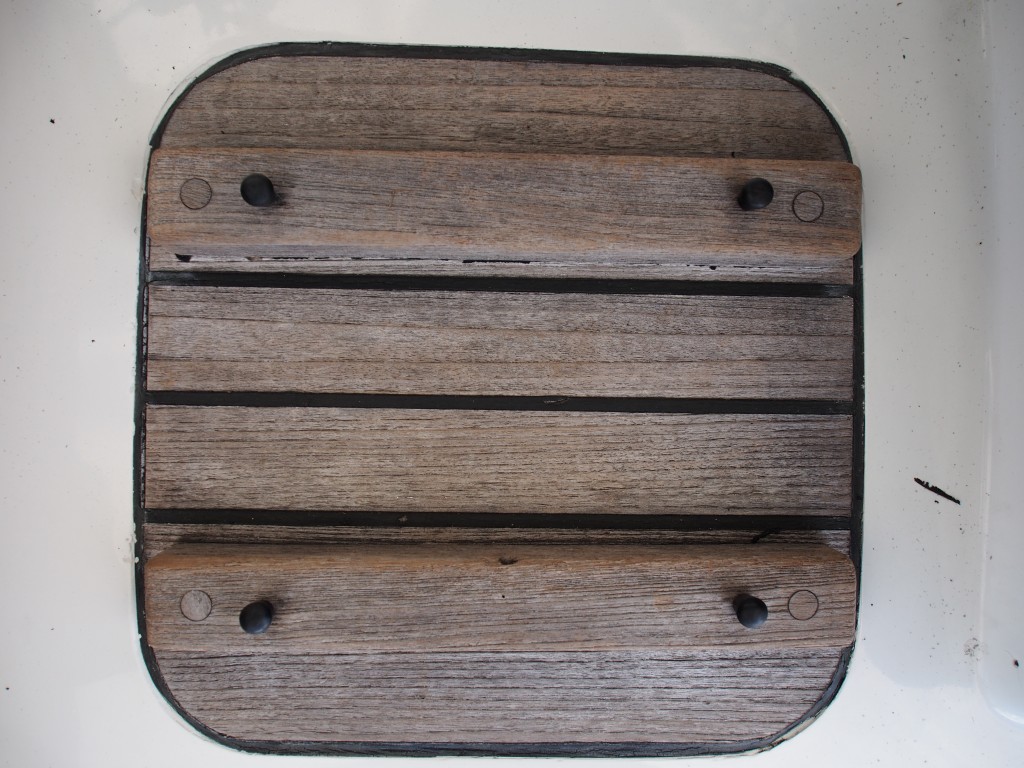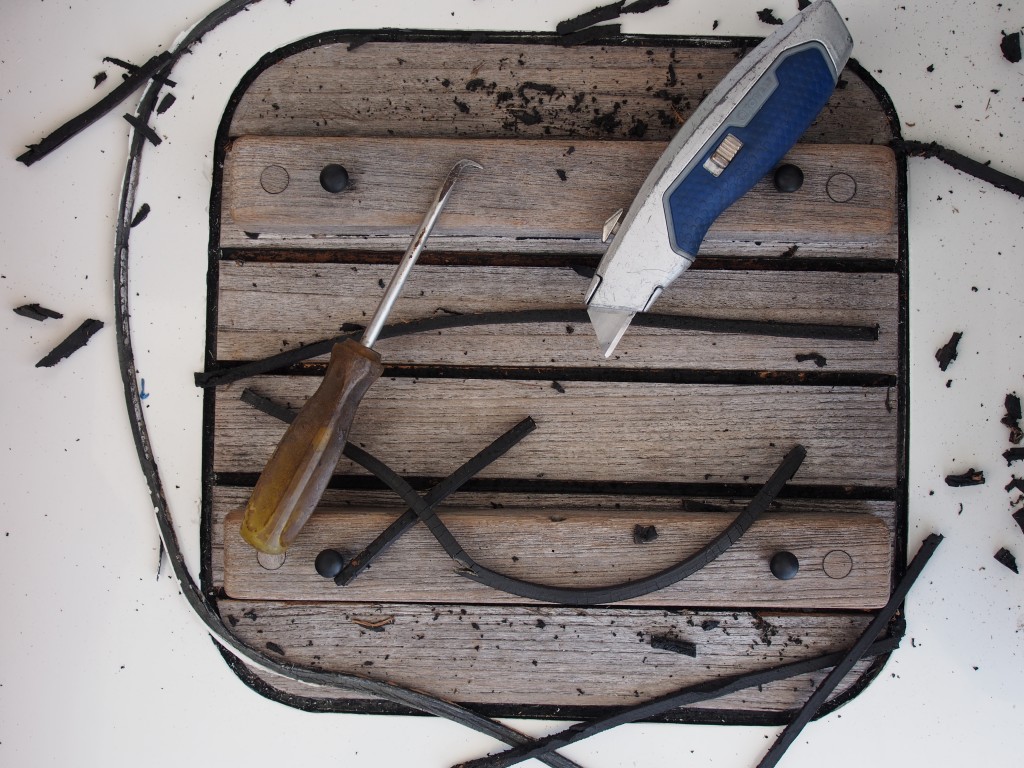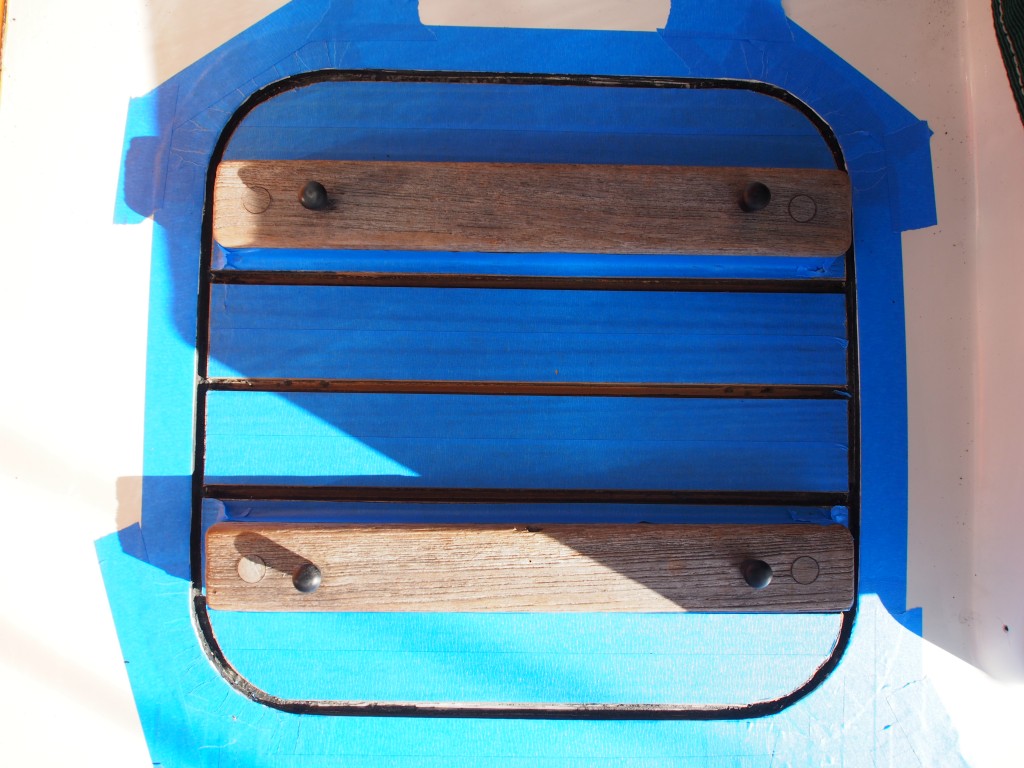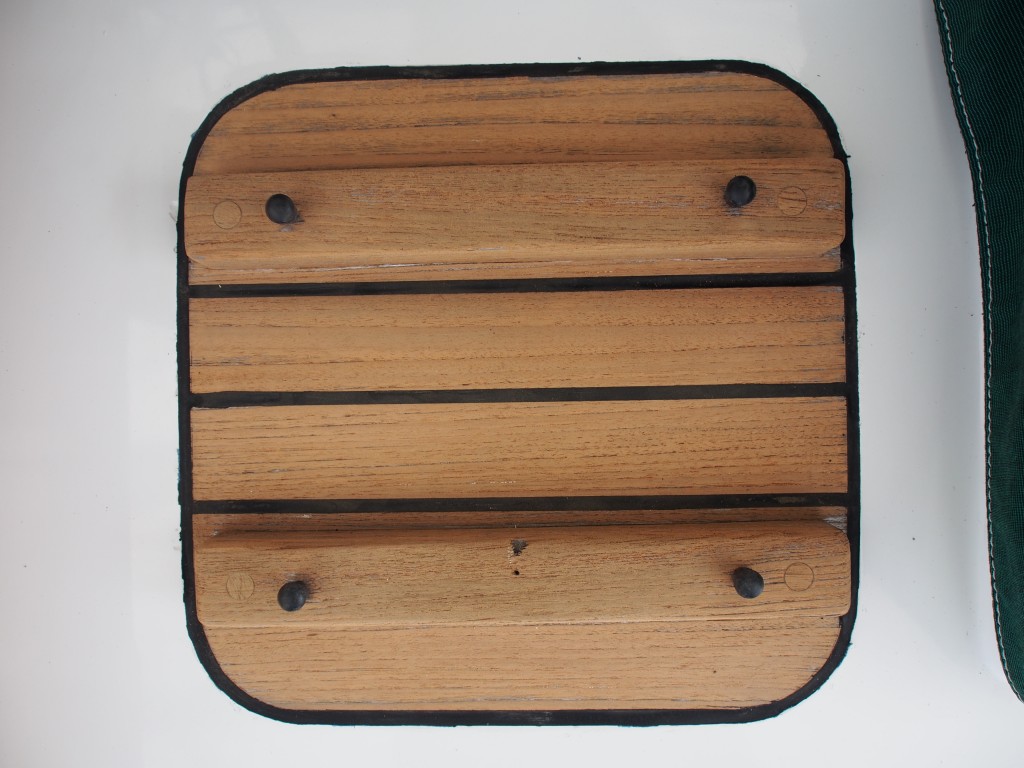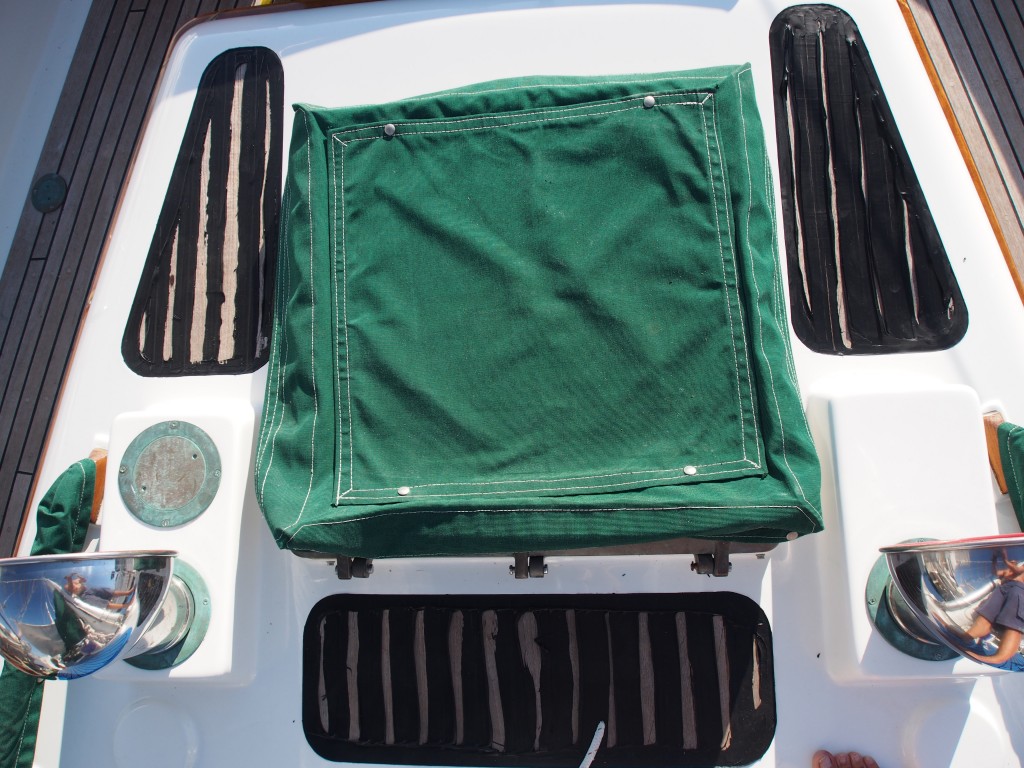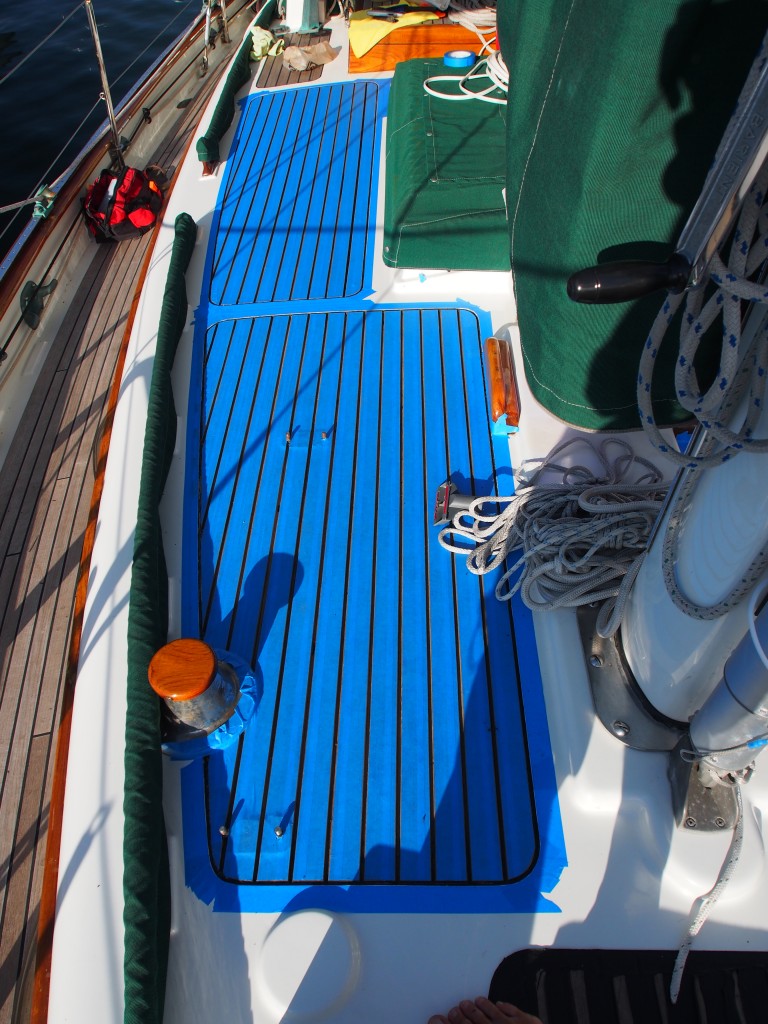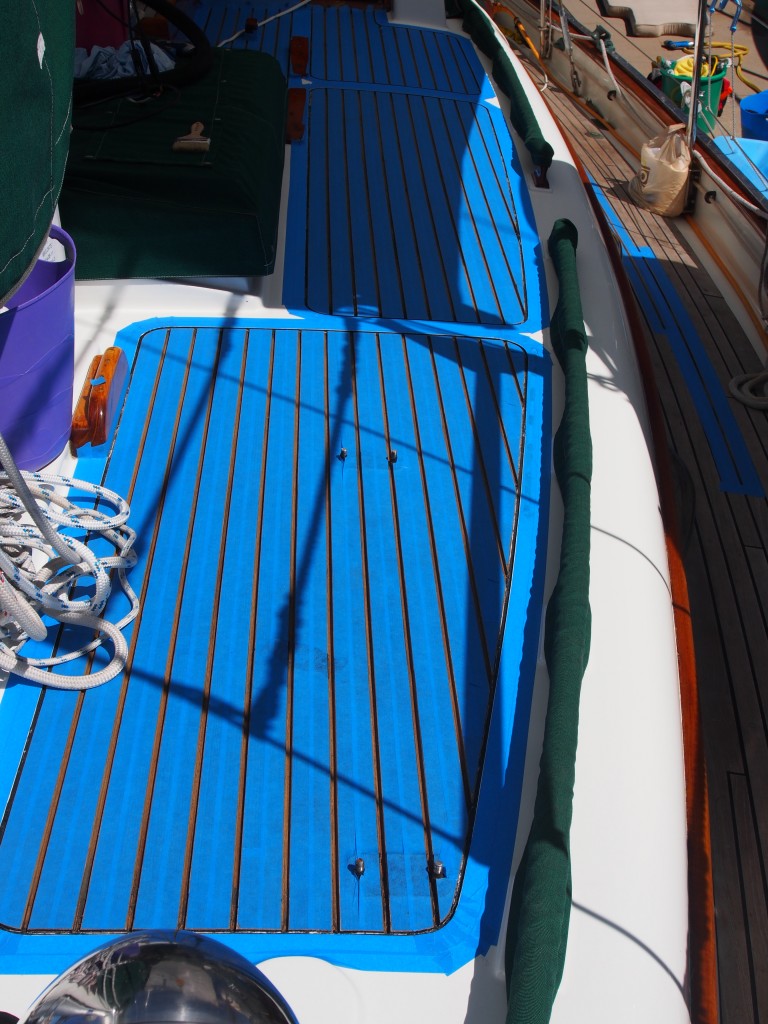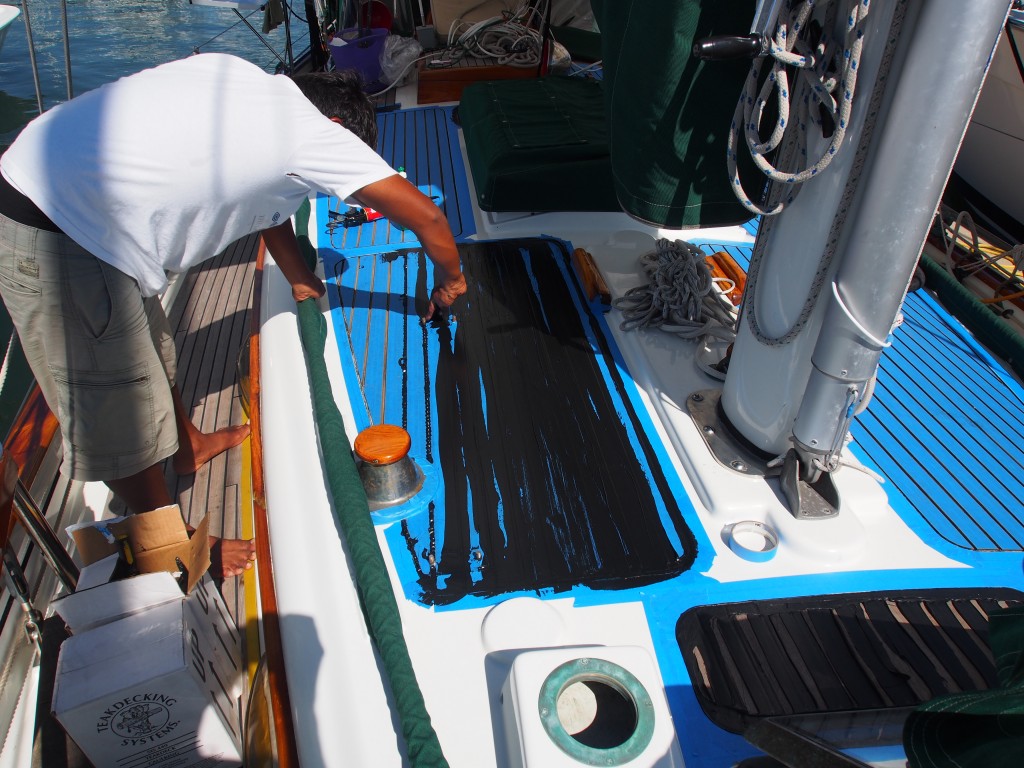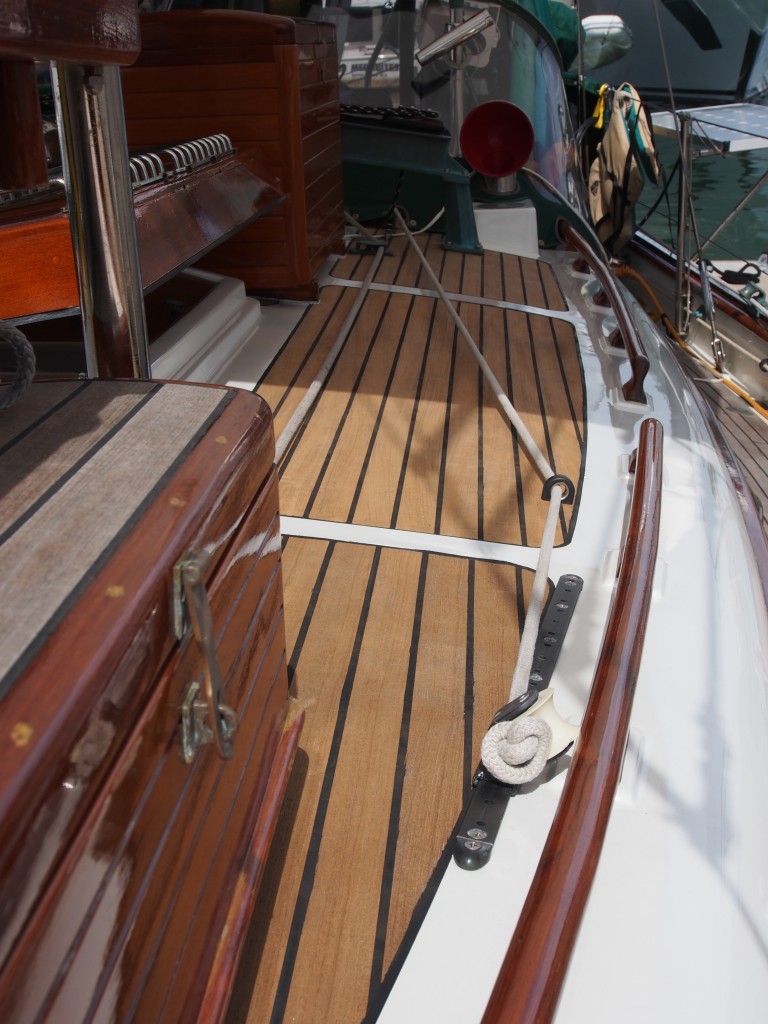While at Marina Vallarta, we saw a lot of boat work being done to other boats on our dock, so I asked around and found someone who does teak deck work. Apropos has all-teak decks and most of it is in good shape for a 33 year-old boat. Built in Taiwan in 1982 when quality teak was in good supply and relatively inexpensive, the teak decks on Apropos still have plenty of thickness, thanks in part to not using a course bristle brush to scrub them. Much of the teak caulking had been re-done during the refit in 2004 and is still in good condition, but all the panels on the coach-top still had the original caulk and showed signs of cracking with age.
I hired Misha, who makes a living taking care of large yachts for their owners, to re-caulk all the deck panels on the coach-top. We agreed on an hourly rate (about 1/4th what it would cost back in Seattle) and he said he could start immediately. He didn’t mind if I helped and I soon became an apprentice working alongside him for 3-1/2 days. After removing deck hardware, deck boxes, the traveler, and anything else in the way, we began by removing the old caulk. This is very labor intensive and involves using a utility knife to score both sides of the channel of caulk along the teak. The channel is U-shaped and about 1/4″ deep, so a small amount of pressure is applied. The caulking can then be removed using a handmade tool to help pull out the caulk. Long strips can be removed by gently pulling on the caulk while using the tool to scape along the bottom of the channel. The tool, similar to a reefing hook, was made from a flat screwdriver that was heated, bent, then shaped to a tapered point. I ended up doing the majority of the caulk removal job while Misha followed with hand-sanding the channel to remove any leftover caulk for better adhesion of the new caulk, and masking the seams with blue 3M tape. As I got more efficient, I would have another panel ready by the time Misha finished masking a panel http://blogs.asburyseminary.edu/blog/cialis-online.html.
There are 2 methods for re-caulking. One is to mask only around the outside edge of the panel (where the fiberglass gel coat is), then apply the caulking (Teak Decking System SIS 440) to the channel and smooth it out with a putty knife. After the caulking dries and cures in 48 hours, some of the excess caulking is cut away with a razor knife and then the entire panel is sanded until only the caulk in the channel remains. The disadvantage of this method is that some of the teak gets sanded away. The advantage is, as long as the teak is thick enough, it removes the ridges in old teak and leaves it nice and flat. I decided to test this method on 3 of the small panels towards the bow.
The second method is what we ended up using on the majority of the teak panels. It involves masking every seam so that only the channel is exposed, then applying the caulking and smoothing it with a putty knife. After the caulking cures, the tape is carefully removed and the panel is sanded. I did the masking of a few of the panels and realized how painstakingly a job it was, especially going around curves! The extra time spent masking the teak in this method is about equal to the amount of time spent removing all the excess caulking in the other method. But in the end, I believe masking every seam is the better approach http://enligneviagr...
After 3-1/2 days of hard labor and 22 tubes of caulk, the job was completed. The coach-top panels are much smoother and the caulking came out great. The final step was to re-bed all the hardware, deck boxes, and traveler back in place.
